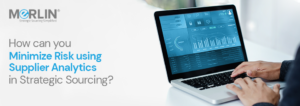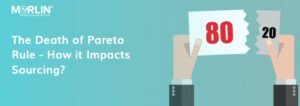Modern day sourcing requires the procurement department to fully understand the cost drivers and be able to leverage appropriate sourcing tools to reflect savings in budget.
Strategic sourcing strives to optimize an organisations supply base while reducing Total Cost of Ownership. However, calculating the Total Cost of Ownership for a particular product or commodity goes beyond the purchase price.
There are other cost elements that buyers need to focus on to achieve a competitive purchase price. Costs including warehousing costs, inventory carrying costs and operating costs, just to name a few, should be taken into consideration. Procurement professionals should analyse spend data to make strategic business decisions about acquiring commodities more effectively and utilizing resources more efficiently.
By breaking down the ‘spend’ of supporting activities into distinct processes, buyers can identify where supply chain efficiencies and costs can benefit the business.
Cost can be broken into 2 categories, namely, Cost elements and Cost drivers.
It’s all about the costs
Cost elements are those elements of strategic sourcing that measures the reduction in cost per unit such as supply chain savings, reduced lifecycle cost and pricing improvements. Volume rebates, payment term discounts are pricing improvements that all traditional procurement departments would look into as part of their strategy to lower cost per unit. However, procurement need to now go beyond classical annual price rebates in direct spend and start addressing demand-related levers. This is where cost drivers play a strategic role.
Let’s take a simple example. A manufacturer realises that a Supplier in location A is supplying only 10% of the actual requirement of a product due to low overall demand in that area and also because the plant is old and cannot cater to more. The sourcing group realising that the existing location had poor utilization rates, were able to reassess alternatives with a Supplier in a nearby location.
Moving to a Supplier in location B increased the logistics costs. However, the new Supplier is now able to accommodate the supply from a single plant at location B and supplies 100% of the commodity achieving economies of scale. The strategic sourcing team was able to reduce cost of procurement by around 15% due to better volume commitments and the Supplier is optimizing facilities and site service costs including cleaning, security, building and equipment maintenance. Additionally, having fewer suppliers reduces the administrative, finance and quality overheads of the organisation as well, leading to further savings. .
Strategic cost drivers
Essentially strategic cost drivers help the sourcing department investigate changes in consumption/ volume and improving operating efficiency. An efficient demand management strategy can help companies reduce consumption, encourage substitution and even change the product mix to realise savings. To reduce procurement and non-procurement related operating expenses an organisation can find a solution to standardise the procurement process, rationalise the supplier base, PO processing, receipt/ warehousing, accounts payable and other operating expenses.

Leveraging Technology
Procurement technology or sourcing tools such as e-procurement that are designed to automate transactions from purchasing to payment (e.g. issuing purchase orders, automatic approval routing, delivery status) and e-sourcing tools developed to facilitate the sourcing process (such as e-RFI, reverse auction, e-auction, supplier selection and real-time negotiations) will continue to advance and make their way into core applications, including Enterprise Resource Planning (ERP) to assist organisations in realising strategic cost drivers.
Advanced solutions facilitate strategic sourcing which helps organisations analyse total cost and highlights the types and magnitude of savings opportunities outside of traditional negotiations around price, delivery and payment terms. Data Analytics and What-If analysis help in understanding the impact of inventory costs, how changes in product specifications drive costs, true life-cycle costs (including warranty, repairs, and disposal), transactional costs and others. A strategic sourcing solution can increase the value beyond the traditional approach and identify sources of savings when suppliers are unable or unwilling to provide price concessions.
Click here if you want to know more about Strategic Sourcing Solution- MeRLIN






